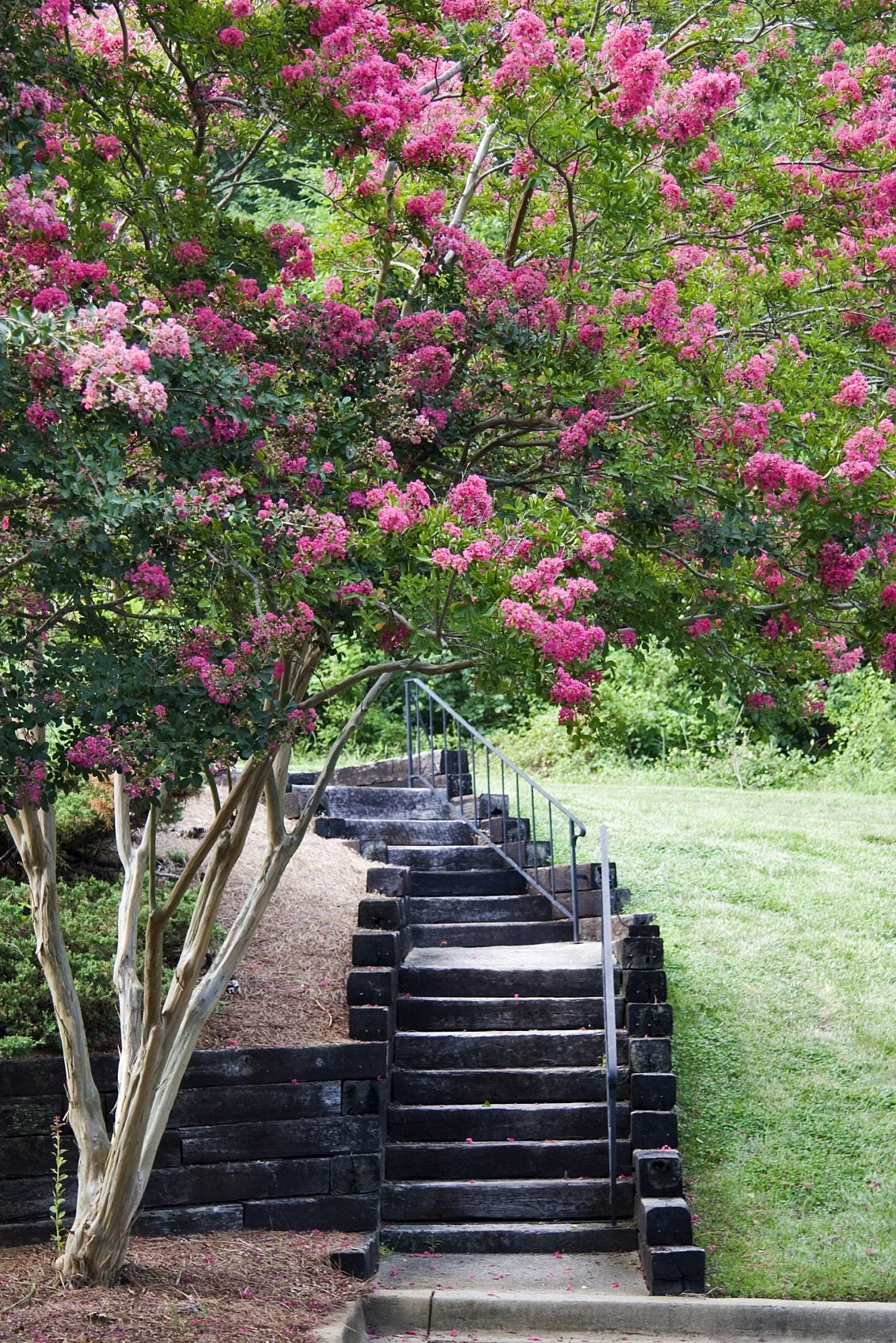Crepe Myrtle Root System: Are Crepe Myrtle Roots Invasive


Crepe myrtle trees are lovely, delicate trees offering bright, spectacular flowers in the summer and beautiful fall color when the weather begins to chill. But are crepe myrtle roots invasive enough to cause problems? You don’t have to worry about this issue because crepe myrtle tree roots are not invasive.
Are Crepe Myrtle Roots Invasive?
The crepe myrtle is a small tree, rarely growing taller than 30 feet (9 m.). Beloved by gardeners for its luxurious summer blossoms in shades of pink and white, the tree also offers exfoliating bark and an autumn foliage display. If you are thinking about planting one in the garden, don’t worry about the invasiveness of crepe myrtles and their roots. The crepe myrtle root system will not harm your foundation. The crepe myrtle root system can extend a considerable distance, but the roots are not aggressive. The roots are relatively weak and will not insert themselves into nearby foundations, sidewalks or endanger nearly plants. Crepe myrtle roots do not sink taproots deep into the ground or send lateral roots out to crack anything in their path. In fact, the entire crepe myrtle root system is shallow and fibrous, spreading out horizontally up to three times as far as the canopy is wide. On the other hand, it is wise to keep all trees at least 5 to 10 feet (2.5-3 m.) away from walkways and foundations. The crepe myrtle is no exception. In addition, the root system grows so close to the surface of the soil that you shouldn’t plant flowers in the area below the tree. Even grass might compete with the shallow crepe myrtle roots for water.
Do Crepe Myrtles Have Invasive Seeds?
Some experts list crepe myrtles as potentially invasive plants, but the invasiveness of crepe myrtle has nothing to do with the crepe myrtle tree roots. Rather, the tree reproduces so readily from its seeds that, once the seeds escape cultivation, the resulting trees can crowd out native plants in the wild. Since most of the popular crepe myrtle cultivars are hybrid and do not produce seeds, reproduction by seeds in the wild is not a problem. This means that you do not risk introducing an invasive species by planting a crepe myrtle in the backyard.
Sign up for the Gardening Know How newsletter today and receive a free copy of our e-book "How to Grow Delicious Tomatoes".

Teo Spengler is a master gardener and a docent at the San Francisco Botanical Garden, where she hosts public tours. She has studied horticulture and written about nature, trees, plants, and gardening for more than two decades, following a career as an attorney and legal writer. Her extended family includes some 30 houseplants and hundreds of outdoor plants, including 250 trees, which are her main passion. Spengler currently splits her life between San Francisco and the French Basque Country, though she was raised in Alaska, giving her experience of gardening in a range of climates.